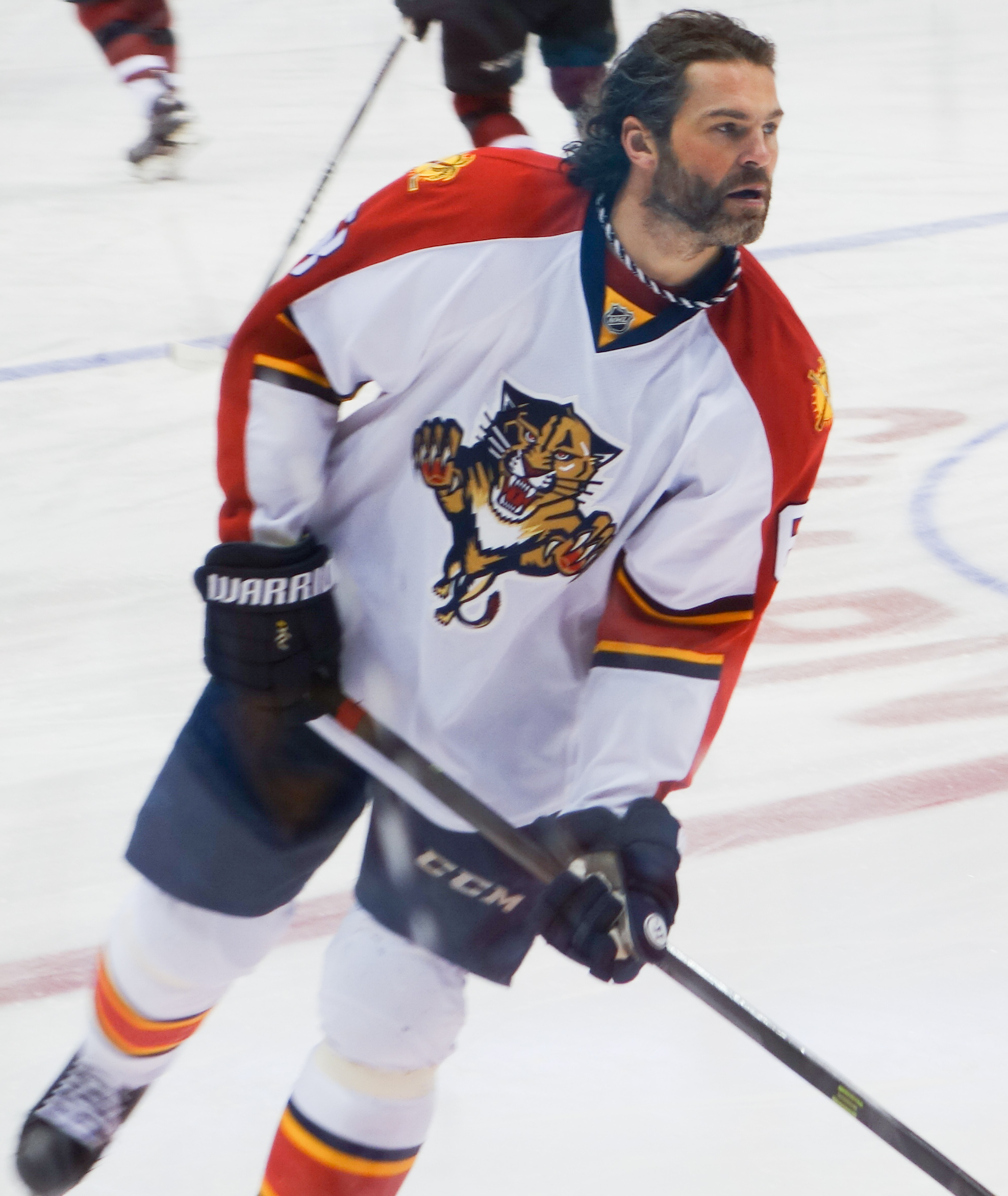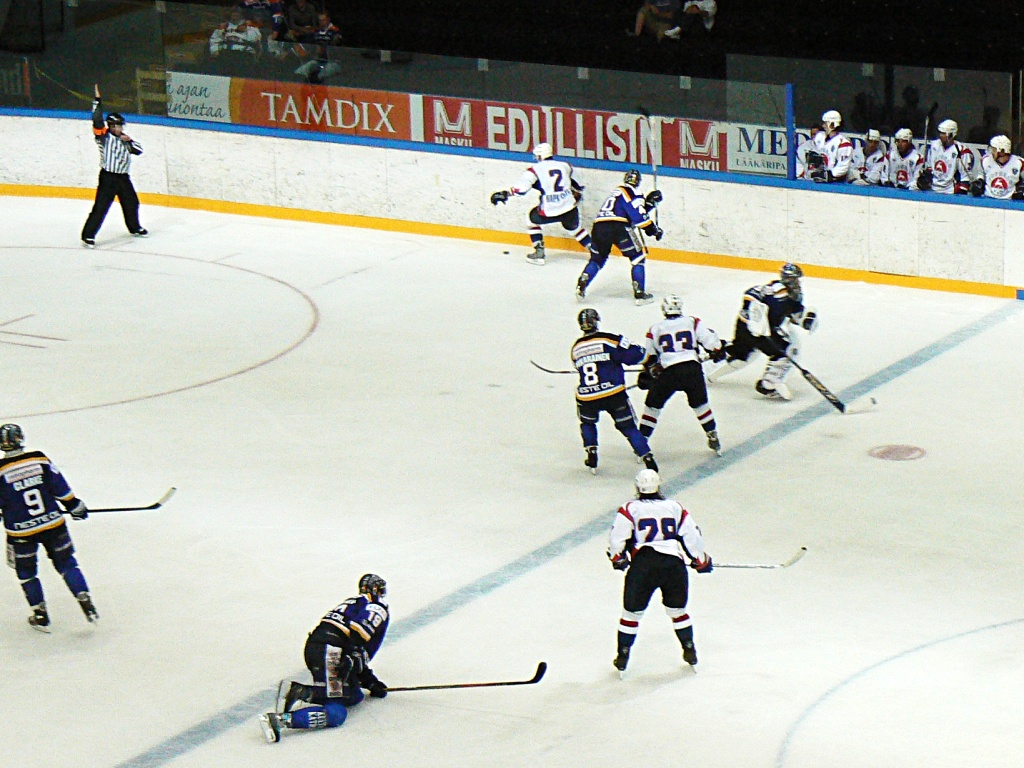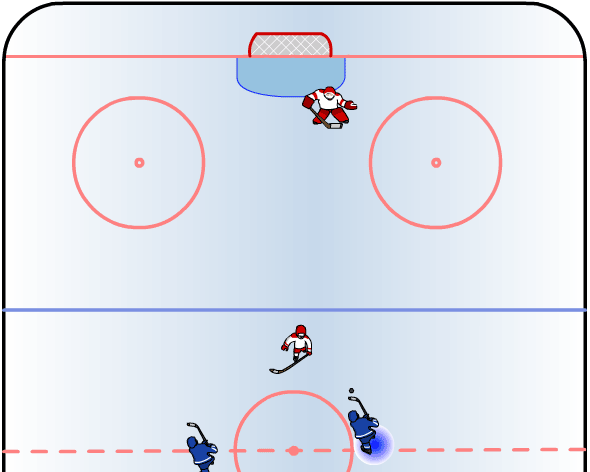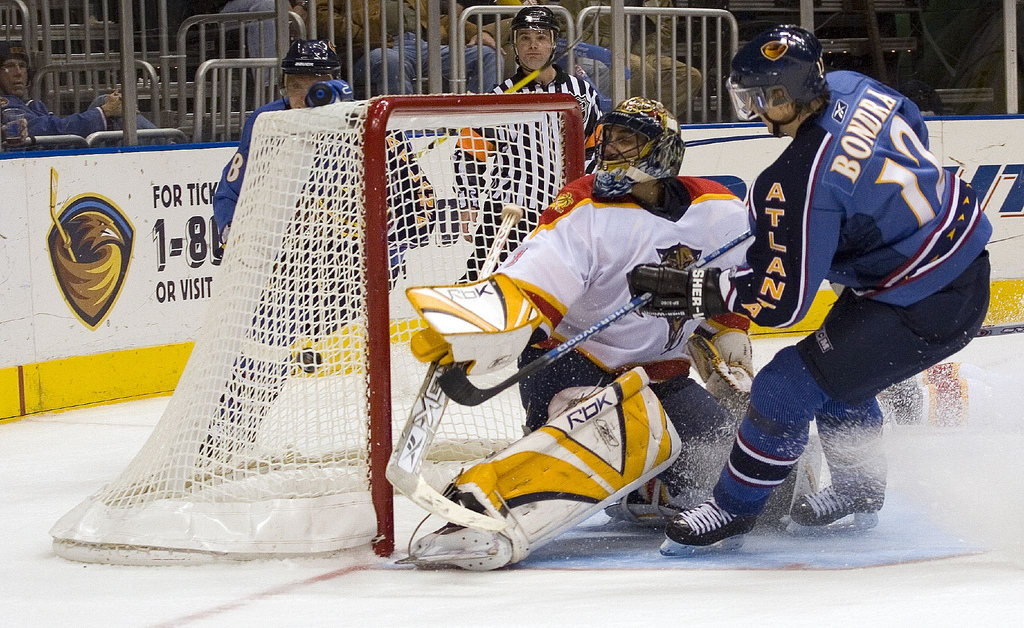|
Vesa Viitakoski
Vesa Ilmari Viitakoski (born February 13, 1971 in Lappeenranta, Finland) is a former professional ice hockey player. Career Viitakoski started his professional career in his home town, Lappeenranta, playing for two seasons in the local club, SaiPa. When SaiPa was relegated at the end of the 1990 SM-liiga season, Viitakoski moved to Tappara Tampere. After three seasons there and a strong performance in the national team, especially in the 1992 IIHF World Championships from which Team Finland came home with silver medals, he signed with the Calgary Flames. All in all, Viitakoski appeared in 23 NHL games with the Flames in the 1993–94, 94–95 and 95–96 seasons, scoring two goals and providing four assists. He also played 198 AHL games as a member of the Saint John Flames and Cornwall Aces squads, with a point total of 72+106=178. Despite this consistent strong performance in the AHL he never broke through in the NHL; this has been attributed to disfavor by the then head coach ... [...More Info...] [...Related Items...] OR: [Wikipedia] [Google] [Baidu] |
Winger (ice Hockey)
Winger, in the game of ice hockey, is a forward position of a player whose primary zone of play is along the outer playing areas. They typically flank the centre forward. Originally the name was given to forward players who went up and down the sides of the rink. Wingers generally have the least defensive responsibilities out of any position on the ice, however they are still tasked with defensive duties such as forechecking duties or covering the point in the defensive zone. Nowadays, there are different types of wingers in the game — out-and-out goal scorers, checkers who disrupt the opponents, and forwards who work along the boards and in the corners. Often a winger's precise role on a line depends upon what type of role the other winger plays; usually lines will have one more goal-scoring oriented winger and one winger more focused on playing the boards, checking and passing the puck to others to take shots (if a larger player, he will sometimes be called a "power forward ... [...More Info...] [...Related Items...] OR: [Wikipedia] [Google] [Baidu] |
Cornwall Aces
The Cornwall Aces were the American Hockey League (AHL) affiliate of the National Hockey League's Quebec Nordiques from 1993 to 1995 and the relocated Colorado Avalanche in 1995–96. They were based in the eastern Ontario city of Cornwall and played at the Ed Lumley Arena inside the Cornwall Civic Complex. After one season being affiliated with Colorado, the franchise went dormant for three seasons, while the Avalanche transferred players to their other affiliate, the Hershey Bears. The franchise was resurrected in 1999 as the Wilkes-Barre/Scranton Penguins. The Cornwall Aces won two division titles during their three-year stay in Cornwall. Coaches were Bob Hartley, who would coach the Colorado Avalanche, the Atlanta Thrashers and the Calgary Flames of the National Hockey League, and Jacques Martin, former head coach of the NHL's Ottawa Senators and Montreal Canadiens The Montreal CanadiensEven in English, the French spelling is always used instead of ''Canadians''. The ... [...More Info...] [...Related Items...] OR: [Wikipedia] [Google] [Baidu] |
1990–91 SM-liiga Season
The 1990–91 SM-liiga season was the 16th season of the SM-liiga, the top level of ice hockey in Finland. 12 teams participated in the league, and TPS Turku won the championship. Standings Playoffs Quarterfinals * JyP HT - Tappara Tampere 2:1 (7:2, 3:4, 3:2) * HPK - HIFK 2:1 (2:4, 4:3, 8:3) Semifinals * TPS - HPK 3:1 (8:0, 3:4, 3:0, 3:1) * KalPa - JyP HT 3:0 (2:1, 4:3, 3:2) 3rd place * HPK - JyP HT 6:3 Final * TPS - KalPa 4:1 (5:1, 4:3, 4:3, 2:6, 7:2) External links SM-liiga official website {{DEFAULTSORT:1990-91 SM-liiga season 1990–91 in Finnish ice hockey Fin A fin is a thin component or appendage attached to a larger body or structure. Fins typically function as foils that produce lift or thrust, or provide the ability to steer or stabilize motion while traveling in water, air, or other fluids. Fin ... Liiga seasons ... [...More Info...] [...Related Items...] OR: [Wikipedia] [Google] [Baidu] |
1989–90 SM-liiga Season
The 1989–90 SM-liiga season was the 15th season of the SM-liiga, the top level of ice hockey in Finland. 12 teams participated in the league, and TPS Turku won the championship. Standings Playoffs Quarterfinals * JyP HT - Tappara 1:2 (8:1, 3:4, 1:5) * HIFK - KalPa 0:2 (3:4, 0:4) Semifinals * TPS - KalPa 3:0 (3:1, 6:5 P, 5:1) * Ilves - Tappara 3:0 (5:4, 5:4, 6:3) 3rd place * Tappara - KalPa 5:3 Final * TPS - Ilves 4:2 (1:4, 4:1, 2:3, 7:0, 5:3, 6:3) Relegation * KooKoo - Hockey-Reipas 1:3 (4:1, 2:8, 6:7, 1:6) * Ässät Pori - JoKP 3:0 (3:2, 5:4, 9:4) External links SM-liiga official website {{DEFAULTSORT:1989-90 SM-liiga season 1989–90 in Finnish ice hockey Fin A fin is a thin component or appendage attached to a larger body or structure. Fins typically function as foils that produce lift or thrust, or provide the ability to steer or stabilize motion while traveling in water, air, or other fluids. Fin ... Liiga seasons ... [...More Info...] [...Related Items...] OR: [Wikipedia] [Google] [Baidu] |
1988–89 SM-liiga Season
The 1988–89 SM-liiga season was the 14th season of the SM-liiga, the top level of ice hockey in Finland. 12 teams participated in the league, and TPS Turku won the championship. Standings Playoffs Quarterfinals * JyP HT - HIFK 2:0 (4:3, 3:2) * Tappara - KalPa 2:0 (6:0, 7:6) Semifinals * TPS - Tappara 3:2 (1:3, 4:5, 3:1, 5:2, 7:3) * Ilves - JyP HT 1:3 (4:5 P, 2:4, 7:4, 1:3) 3rd place * Ilves - Tappara 10:3 Final * TPS - JyP HT 4:1 (5:0, 2:4, 3:1, 7:1, 4:1) Relegation * JoKP Joensuu - Ässät Pori Ässät or Ässä may refer to: * HC Ässät Pori Oy, Finnish sports club **Porin Ässät (men's ice hockey) **Porin Ässät (women's ice hockey) **Porin Ässät (men's football) ** PATA (esports) *, Finnish band from Oulu *S Group, Finnish Consum ... 3:2 (5:4 OT, 4:5, 5:1, 3:5, 5:3) * Kärpät Oulu - Jokerit Helsinki 2:3 (7:3, 3:7, 8:4, 2:3, 2:5) External links SM-liiga official website {{DEFAULTSORT:1988-89 SM-liiga season 1988–89 in Finnish ice hockey Fin Li ... [...More Info...] [...Related Items...] OR: [Wikipedia] [Google] [Baidu] |
Penalty (ice Hockey)
A penalty in ice hockey is a punishment for an infringement of the rules. Most penalties are enforced by sending the offending player to a penalty box for a set number of minutes. During the penalty the player may not participate in play. Penalties are called and enforced by the referee, or in some cases, the linesman. The offending team may not replace the player on the ice (although there are some exceptions, such as fighting), leaving them short-handed as opposed to full strength. When the opposing team is said to be on a ''power play'', they will have one more player on the ice than the short-handed team. The short-handed team is said to be "on the penalty kill" until the penalty expires and the penalized player returns to play. While standards vary somewhat between leagues, most leagues recognize several common varieties of penalties, as well as common infractions. The statistic used to track penalties is called "penalty minutes" and abbreviated to "PIM" (spoken as single w ... [...More Info...] [...Related Items...] OR: [Wikipedia] [Google] [Baidu] |
Point (ice Hockey)
In ice hockey, point has three contemporary meanings. Personal stat A point is awarded to a player for each goal scored or assist earned. The total number of goals plus assists equals total points. The Art Ross Trophy is awarded to the National Hockey League (NHL) player who leads the league in scoring points at the end of the regular season. Team stat Points are also awarded to assess standings (or rankings). Historically, teams were awarded two points for each win, one point for each tie and no points for a loss. Such a ranking system, implemented primarily to ensure a tie counted as a "half-win" for each team in the standings, is generally regarded as British and/or European in origin and as such adopted by the National Hockey League which was founded in Canada where leagues generally used ranking systems of British origin. Awarding points in the standings contrasts with traditional American ranking systems favored in sports originating within the United States where today the m ... [...More Info...] [...Related Items...] OR: [Wikipedia] [Google] [Baidu] |
Assist (ice Hockey)
In ice hockey, an assist is attributed to up to two players of the scoring team who shot, passed or deflected the puck towards the scoring teammate, or touched it in any other way which enabled the goal, meaning that they were "assisting" in the goal. There can be a maximum of two assists per goal. The assists will be awarded in the order of play, with the last player to pass the puck to the goal scorer getting the primary assist and the player who passed it to the primary assister getting the secondary assist. Players who gain an assist will get one point added to their player statistics. Despite the use of the terms "primary assist" and "secondary assist", neither is worth more than the other, and neither is worth more or less than a goal. Assists and goals are added together on a player's scoresheet to display that player's total points. Special cases If a player scores off a rebound given up by a goaltender, assists are still awarded, as long as there is no re-possession by t ... [...More Info...] [...Related Items...] OR: [Wikipedia] [Google] [Baidu] |
Goal (ice Hockey)
In ice hockey, a goal is scored when the puck entirely crosses the goal line between the two goal posts and below the goal crossbar. A goal awards one point to the team attacking the goal scored upon, regardless of which team the player who actually deflected the puck into the goal belongs to (see also own goal). Typically, a player on the team attempting to score shoots the puck with their stick towards the goal net opening, and a player on the opposing team called a goaltender tries to block the shot to prevent a goal from being scored against their team. The term goal may also refer to the structure in which goals are scored. The ice hockey goal is rectangular in shape; the front frame of the goal is made of steel tube painted red (blue in the ECHL because of a sponsorship deal with GEICO) and consists of two vertical goalposts and a horizontal crossbar. A net is attached to the back of the frame to catch pucks that enter the goal and also to prevent pucks from entering it ... [...More Info...] [...Related Items...] OR: [Wikipedia] [Google] [Baidu] |
Season (sports)
In an organized sports league, a typical season is the portion of one year in which regulated games of the sport are in session: for example, in Major League Baseball the season lasts approximately from the last week of March to the last week of September. In other team sports, like association football or basketball, it is generally from August or September to May although in some countries - such as Northern Europe or East Asia - the season starts in the spring and finishes in autumn, mainly due to weather conditions encountered during the winter. A year can often be broken up into several distinct sections (sometimes themselves called seasons). These are: a preseason, a series of exhibition games played for training purposes; a regular season, the main period of the league's competition; the postseason, a playoff tournament played against the league's top teams to determine the league's champion; and the offseason, the time when there is no official competition. Preseason In ... [...More Info...] [...Related Items...] OR: [Wikipedia] [Google] [Baidu] |
Playoffs
The playoffs, play-offs, postseason or finals of a sports league are a competition played after the regular season by the top competitors to determine the league champion or a similar accolade. Depending on the league, the playoffs may be either a single game, a series of games, or a tournament, and may use a single-elimination system or one of several other different playoff formats. Playoff, in regard to international fixtures, is to qualify or progress to the next round of a competition or tournament. In team sports in the U.S. and Canada, the vast distances and consequent burdens on cross-country travel have led to regional divisions of teams. Generally, during the regular season, teams play more games in their division than outside it, but the league's best teams might not play against each other in the regular season. Therefore, in the postseason a playoff series is organized. Any group-winning team is eligible to participate, and as playoffs became more popular they were ... [...More Info...] [...Related Items...] OR: [Wikipedia] [Google] [Baidu] |
Regular Season
In an organized sports league, a typical season is the portion of one year in which regulated games of the sport are in session: for example, in Major League Baseball the season lasts approximately from the last week of March to the last week of September. In other team sports, like association football or basketball, it is generally from August or September to May although in some countries - such as Northern Europe or East Asia - the season starts in the spring and finishes in autumn, mainly due to weather conditions encountered during the winter. A year can often be broken up into several distinct sections (sometimes themselves called seasons). These are: a preseason, a series of exhibition games played for training purposes; a regular season, the main period of the league's competition; the postseason, a playoff tournament played against the league's top teams to determine the league's champion; and the offseason, the time when there is no official competition. Preseason In ... [...More Info...] [...Related Items...] OR: [Wikipedia] [Google] [Baidu] |




